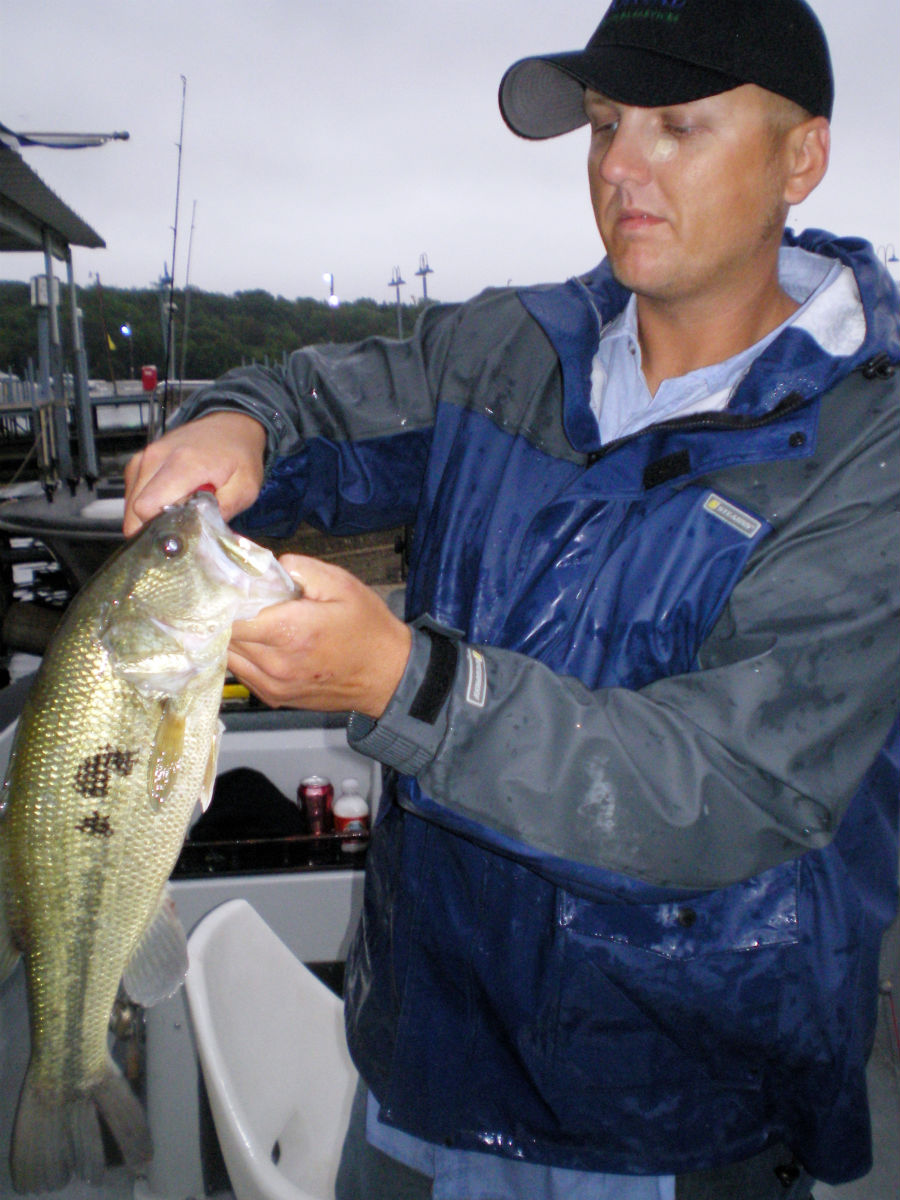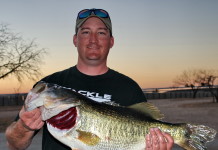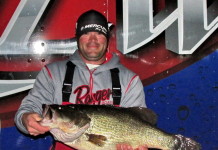Bass fishing can be the most exciting form of angling around, but on the toughest of days, it also can be the most aggravating.
Finicky fish can be frustrating, and rightly so. Most anglers expect their tried and true methods to boat big loads of bass, but sometimes things just don’t go as planned.
However, there are numerous ways to stack the deck in your favor. Here are ways to wake up those bass!
Give it the finesse touch: Changing up your rig can be the simple difference between catching fish and striking out. A couple of ways to alter up a variety of lures include the wacky rig and shaky head rig. Wacky style is simply a different way to present a worm, Senko or other similar soft plastic lure. You bend the lure so the ends touch and slide a hook right down the middle of the bend. This rig will cause the ends to flutter and drop as it’s pulled through the water, which will entice a hungry bass in most situations. The key is that your presentation looks like a wounded critter. Lure companies now market a plastic O-ring that you can put on a worm to hold the hook rather than sticking it into the plastic body, which will prolong the life of your baits.
Shaky head refers to a style of fishing a plastic worm or other straight lure on a jig head designed to keep it upright. The technique typically can be used in a number of situations when you know where bass might be but they won’t take another lure. You flip your lure rigged on a “shaky head” jig to where fish might be and allow it to hit the bottom, typically keeping the line slack. The key to the tactic is to wiggle the line just enough to make the lure look like a critter feeding on the bottom while keeping the jig head stationary.
Another thing to consider in finesse fishing, or any other form for that matter, is lure size. Sometimes it may be pertinent to go smaller instead of larger for finicky fish, especially ones that may not be looking for a huge meal. In those snack-size situations, you can tailor your offerings in a toned-down version, which can apply to a multitude of situations including topwater fishing and when plying the water column with deep-diving crankbaits.
Sometimes a big bass just wants a small meal. It’s not their fault.
Drop in: The drop-shot rig has been around for a while on the tournament circuit, notably producing big fish for those looking for a big payday. Another “finesse” technique, drop-shotting typically is used with lighter line, though dirty water allows anglers the chance to bulk up their braid.
The key with this technique is to leave your lure in the strike zone as long as possible, dancing it like a live critter that a finicky fish simply can’t resist. The basic rig include a small hook tied on above a tag end of anywhere from a foot to two feet of extra line. A stout weight is tied at the end of that extra space, allowing an angler to bounce the whole rig near the bottom or around timber and other fish-holding cover while the lure flutters near fish that may not necessarily be in the mood to eat.
Drop-shotting’s origins lay in “stair-stepping” – bouncing lures down ledges and other changes in terrain – but it also can work around docks and other deeper areas of cover, and even in the shallows. The key is in feeling the weight of your sinker and simply moving the rod tip enough to keep the lure on the move, just enough to entice that bass to bite.
Go big and bright: Utilizing larger baits that are more brilliantly colored can help entice a bite in a host of scenarios and you shouldn’t be afraid to change up the looks of your lures often rather than pounding the water with the same offering that isn’t working.
If a bass is holding on a bed in the shallows, any unlucky intruder will be sent packing, but if they can see your bait easier, they’ll be more likely to pounce. Some of the most common baits that will drive bedded bass crazy are large salamanders, worms and crawfish. A bright bait also will allow you to see it better in the water if you’re sight fishing. Another plus to using larger baits is many anglers think they catch larger fish. This certainly could hold true if a fish is in a staging area and is looking to maximize its gluttonous efforts.
Going big with topwaters, buzzbaits and other lures that make a splash also can get some fish to rise and attack. Classic stick baits can be fished by “walking the dog” and will catch fish in many situations and settings while other time-tested models such as poppers, wobblers and chuggers always are known for their success in raising their attention of even finicky fish.
Use the real thing: Anglers from coast to coast and everywhere in between long have learned the value of using live bait, including such notable critters as crawfish and waterdogs (larval salamander) for lunker largemouths, and for good reason: A bass sitting on a nest hates intruders – especially live ones – and will act accordingly. And sometimes, live bait simply outfishes imitations during other times of the year depending on the situation you find yourself in with your local bass that are being particularly choosy.
The ubiquitous nightcrawler gave birth to the artificial worm industry and probably is responsible for more fish caught than any other offering, but don’t overlook all the other good live baits out there: shiners, minnows and shad; sunfish and bream; and crickets and grasshoppers.
A big, hungry bass will try to latch onto almost anything it deems fit to eat, which means that like all the lures in your tackle box, sometimes you just have to change things up.
Some anglers may not enjoy using live bait for any number of reasons – that it makes fishing too easy or that it’s even beneath them – are among the most common of answers. However, it’s not, and could even help you prepare for a tournament or other big event if you’re so inclined. Now I know live bait isn’t allowed in tournaments or even the official practice days for those events, but if you’re looking for the next big innovation in artificial lure fishing, you might learn a thing or two from flipping the real thing during other “pre-fishing” opportunities.
You can’t overlook the fact that a wise, old lunker bass may have seen many an artificial presentation and “learned” to avoid your tackle box full of lures. However, that fish also can’t unlearn the natural cycle of life for a big bass – to eat as much as it can – and if the bass are taking a certain bait fish, say a smaller shad in open-water areas above rocky ledges, you might act accordingly and fish out a similar imitation pattern and tie it on.
Going natural may just be the ticket when all your other methods simply aren’t working.
Knock on the door: Bass are equal-opportunity squatters and will inhabit a wide variety of underwater terrain, so you simply need to know where to look for that lunker. The life cycle of the bass is based heavily on eating and spawning, so knowing when to be searching out certain areas for those fish is key, too.
Among the known year-round haunts of lunkers are docks, pilings and other manmade structure, but you shouldn’t overlook the other natural cover that’s so appealing to bass: weed mats that rise from the bottom, offering premium hiding and ambush spots; lily pads that hover over prime fishing real estate; floating vegetation that drift and ebb into new areas such as coves, bringing lots of bass with them; standing timber and stumps, generally the bigger the better, including those with lots of exposed roots and eroded areas where fish can lurk; and especially submerged brush, which can harbor untold numbers of fish that burrow into every nook and cranny of a downed tree or floating anchor of branches from where they can ambush prey.
Another area to focus your efforts all year is around riprap, which can be found on almost any decent-sized body of water. The rocks, rubble and debris used to armor shorelines from erosion is fantastic habitat that will hold huge numbers of big bass, especially when the rocks warm from the sun in periods of cooler weather. While riprap and rocky areas often are large, sometimes only a few particular areas will be appealing as fish-holding cover so don’t just expect to head to the rubble and catch fish all day, but if you find the right spot, you’ll likely discover a bunch of fish.
Bass fishing remains the No. 1 angling pursuit nationwide and lunkers will always test the skill and mettle of everyone from the tournament professional to the weekend warrior. Hopefully, by following these tips and tactics you’ll hook up with even the most finicky of bass and enjoy a great day on the water. No matter where you are, there’s a good lunker lake nearby, so get to catching!





















Fishing for bass takes a lot more strategic I thought. i was mainly searching for suggestions for what type of tackle would be best to use. It was a delightful surprise to find out things like areas where you can fine bass.
I am fascinated with the insight here in this post. Thank you for sharing.
I like your ideas for different presentations of the worm and lure. Fishing bass is definitely fun but frustrating if the fish are picky. Great ideas here!